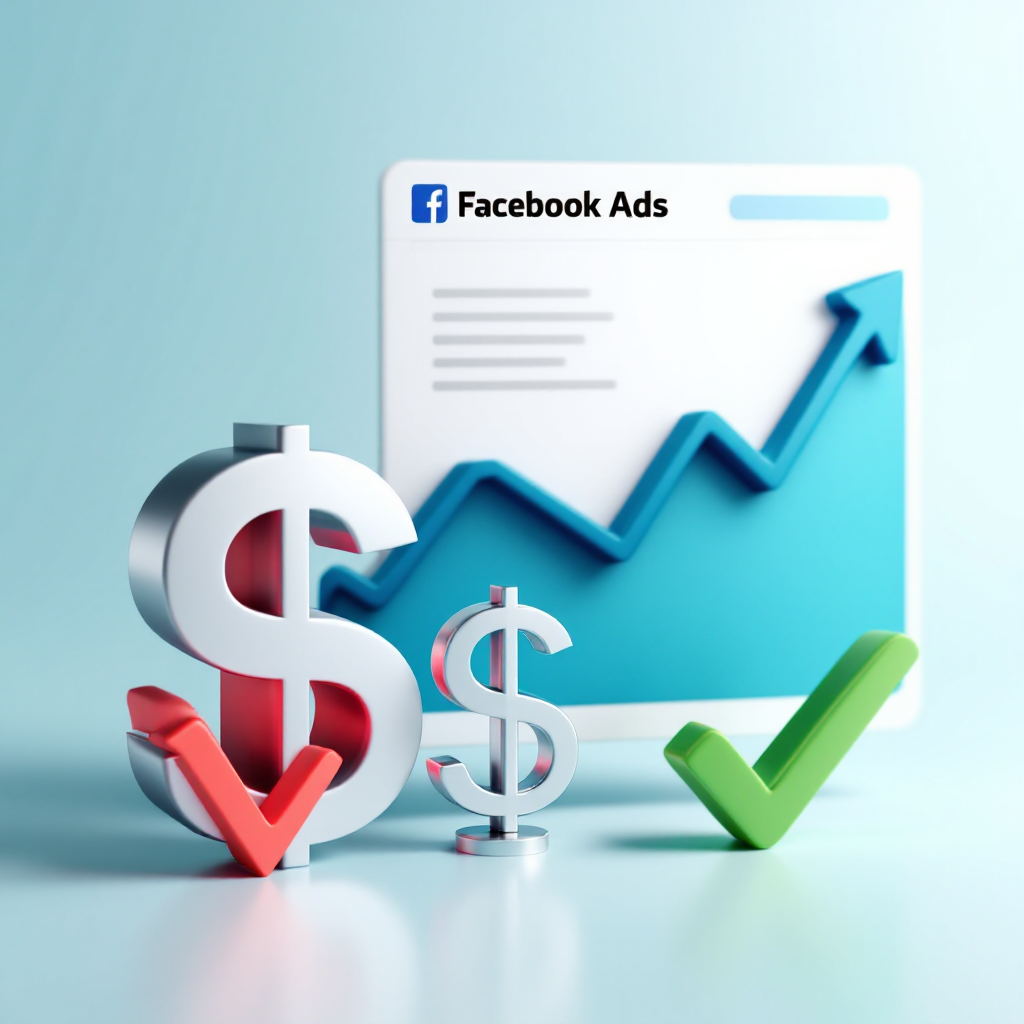Facebook Ads can be an incredibly effective marketing tool, but high advertising costs can quickly eat into your profits. The key to a successful ad campaign is not just spending more but spending smarter.
In this article, we’ll explore proven strategies to reduce your Facebook Ads cost without sacrificing performance.
1. Understand How Facebook Ad Costs Work
Before diving into cost-saving strategies, it’s important to understand how Facebook determines ad costs. Facebook Ads are based on an auction system, where advertisers bid for ad placements. The cost of your ad is influenced by:
- Competition – More advertisers in your niche mean higher costs.
- Relevance Score – Facebook rewards ads with higher engagement and better user experience by lowering costs.
- Target Audience – Some audiences are more expensive to reach than others.
- Ad Placement – Costs vary depending on where your ad appears (News Feed, Stories, etc.).
- Optimization Goal – Ads optimized for conversions generally cost more than those optimized for reach.
2. Improve Your Ad Relevance Score
Facebook assigns a Relevance Score (or Quality Ranking) to every ad. This score is based on how users engage with or react to your ad. A higher score means lower ad costs.
✅ How to Improve Relevance Score:
- Create engaging and valuable ad content – Avoid overly promotional or spammy ads.
- Use high-quality visuals – Eye-catching images and videos improve engagement.
- Write compelling ad copy – Focus on customer pain points and solutions.
- Test different ad formats – Carousel ads, videos, and stories can increase engagement.
- Target the right audience – A well-defined audience leads to better ad performance.
3. Refine Your Audience Targeting
One of the biggest reasons advertisers waste money on Facebook Ads is broad or inaccurate targeting.
🎯 Ways to Optimize Targeting:
- Use Lookalike Audiences – Facebook can find people similar to your best customers.
- Refine interest-based targeting – Avoid broad interests and test specific ones.
- Exclude irrelevant audiences – Use the Exclude feature to filter out users who are unlikely to convert.
- Retarget website visitors – Retargeting people who already know your brand is more cost-effective.
4. Optimize Ad Placements
Facebook allows you to place ads across multiple locations, including:
- Facebook News Feed
- Instagram Feed & Stories
- Messenger Ads
- Audience Network
📌 How to Save Money on Placements:
- Avoid Audience Network if you don’t need extra visibility.
- Use automatic placements initially, then analyze performance.
- If one placement is too expensive, shift budget to cheaper performing ones.
5. A/B Test Your Ads to Find the Best-Performing Version
A/B testing helps you compare different ad elements and choose the best one before scaling.
🔍 What to A/B Test:
- Ad creatives (images vs. videos)
- Ad copy and headlines
- Call-to-action (CTA) buttons
- Target audiences
Facebook’s built-in A/B testing tool can help you find the most cost-effective ad variation.
6. Use Facebook’s Budget Optimization Features
Facebook offers different budgeting options that can help you control ad spend effectively.
💰 Best Budgeting Practices:
- Use Campaign Budget Optimization (CBO) to allocate budget to the best-performing ads.
- Start with a low daily budget and increase it gradually.
- Monitor cost-per-result and pause expensive ad sets.
7. Focus on High-Converting Audiences
Not all audiences convert equally. Instead of spending money on cold audiences, focus on:
- Website visitors – Retarget users who visited your site but didn’t convert.
- Engaged social media users – People who liked, shared, or commented on your posts.
- Email subscribers – Custom audiences from your email list.
These users already know your brand, making them cheaper to convert.
8. Improve Your Landing Page Experience
A poorly optimized landing page can increase ad costs by lowering conversions.
🌟 Landing Page Best Practices:
- Ensure fast loading speed (under 3 seconds).
- Use mobile-friendly design.
- Write a clear and persuasive CTA.
- Minimize distractions (remove unnecessary links or pop-ups).
A high-converting landing page means more results for the same ad spend.
9. Leverage Facebook’s Retargeting Ads
Retargeting is cheaper and more effective than targeting cold audiences.
👥 Best Retargeting Strategies:
- Abandoned cart retargeting – Show ads to users who left items in their cart.
- Video viewers – Target people who watched at least 50% of your videos.
- Past website visitors – Bring back users who visited but didn’t convert.
Retargeted users are more likely to convert, reducing overall ad costs.
10. Monitor and Adjust Your Campaigns Regularly
Facebook Ads require constant monitoring to avoid budget waste.
📊 Key Metrics to Track:
- Cost per Click (CPC) – Are you paying too much per click?
- Click-Through Rate (CTR) – A low CTR may indicate weak ad copy.
- Conversion Rate – Are your ads turning clicks into sales?
- Return on Ad Spend (ROAS) – Are your ads profitable?
If costs rise, pause underperforming ads and reallocate budget to better-performing ones.
Final Thoughts
Reducing Facebook Ads costs without sacrificing performance requires smart targeting, engaging content, and continuous optimization. By implementing these strategies, you can achieve higher conversions at a lower cost, making your ad campaigns more profitable.
Start optimizing your Facebook Ads today and maximize your ROI! 🚀
